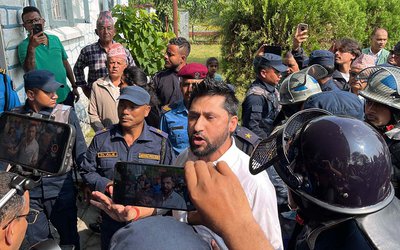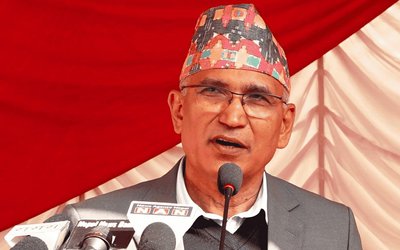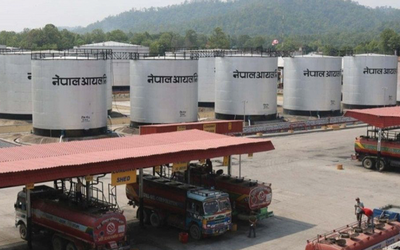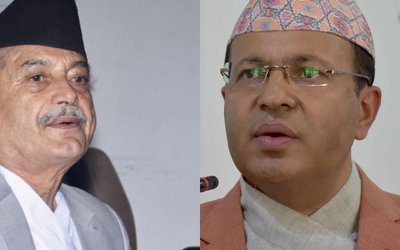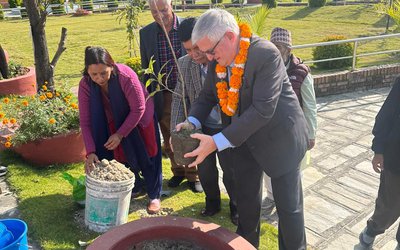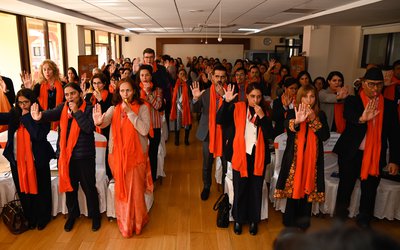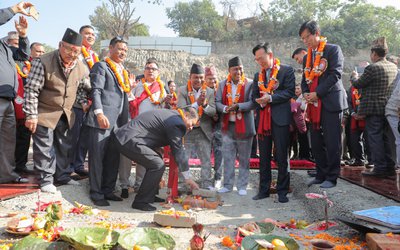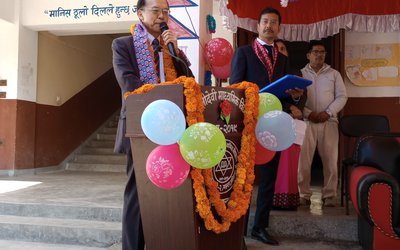
The Central Bureau of Statistics (CBS) released key findings of the Nepal Multiple Indicator Cluster Survey (NMICS) 2014. The findings included data on indicators related to education, health and nutrition and water, sanitation and hygiene (WASH). The full report is expected to be launched in the second quarter of 2015.
According to a press release issued by UNICEF, MICS is an internationally agreed household survey programme developed by UNICEF and constitutes of one of the world's largest sources of statistical information on children and women. It assists countries in filling data gaps for monitoring human development in general and the situation of children and women in particular.
The round 5 of MICS was conducted in Nepal in 2014 with technical and financial support from UNICEF. It seeks to provide data for developing evidence-based policies as well as monitoring progress towards national goals and global commitments aimed at promoting the welfare of children, including the Millennium Development Goals (MDG). The survey covers topics related to nutrition, child health, environment, reproductive health, education, child protection, and HIV and AIDS. Also, during this round, NMICS tested water quality from sampled households (the second country globally to test water quality in MICS) as well as measured children's weight and height for the first time
According to the key findings, the current under-five mortality rate is 38 per 1,000 live births while the neonatal mortality rate is 23 per 1,000 live births, which accounts for 61 percent of under-five deaths. Full immunization coverage against key childhood diseases of children under one is 85 percent.Two thirds of women attended at least one antenatal care visit (68 percent) andover half of the women hada skilled birth attendant during delivery (56 percent). Nearly half (49 percent) of women of reproductive age are marrying before the age of 18. Of them 16 percent were married before the age of 15. The adolescent fertility rate is 71 per 1,000 women. Stunting of children under five is 37 percent, underweight prevalence is 30 percent and wasting prevalence 11 percent.
“Nearly all households have access to improved sources of drinking water (93 percent). The proportion of households without improved drinking water using appropriate treatment methods is 14 percent. Though access to improved water has increased, about 71% of the water sources are contaminated with fecal coliform.In addition, 82 percent of households having access to water sources are exposed to water contaminated with fecal coliform which indicates further contamination of water in households.Sixty percent of households have access to improved sanitation facilities that are not shared,” reports the press release issued by UNICEF.
Among children of school going age, 86 percent attend primary or secondary school. Almost all children attending primary school reach the fifth grade (99 percent) and complete it (99.5 percent). Nearly all children transition to secondary school (97 percent) from primary, but only two thirds of secondary school age children actually attend secondary or a higher form of education (66 percent). Gender parity index in attendance in primary and secondary schools stand at 0.99 and 1.02 respectively.
MICS is currently conducted every three years. The previous round of NMICS implemented in 2010 covered only the mid and far western region (24 districts) of Nepal. This time, NMICS-5 covers all 75 districts with a sample size of 13,000 households (in 520 clusters). There were 25 households per cluster in the sample. NMICS-5 also provides disaggregated data by 15 sub- regional levels as well as by urban and rural areas. Data was compiled by 15 teams of interviewers conducting questionnaires covering households, women aged 15-49 and children under five years. These interviewers also conducted water quality testing.
- PM Oli's Visit To China: Geopolitical Implications
- Nov 19, 2024
- NEA: Kul Man Ghising, A Cool Man
- Oct 28, 2024
- DASHAIN FESTIVAL : Festival of Unity
- Oct 04, 2024
- NEPAL-CANADA Bilateral Meeting
- Oct 04, 2024
- MIDDLE BHOTEKOSHI: Final Stage
- Sep 23, 2024

